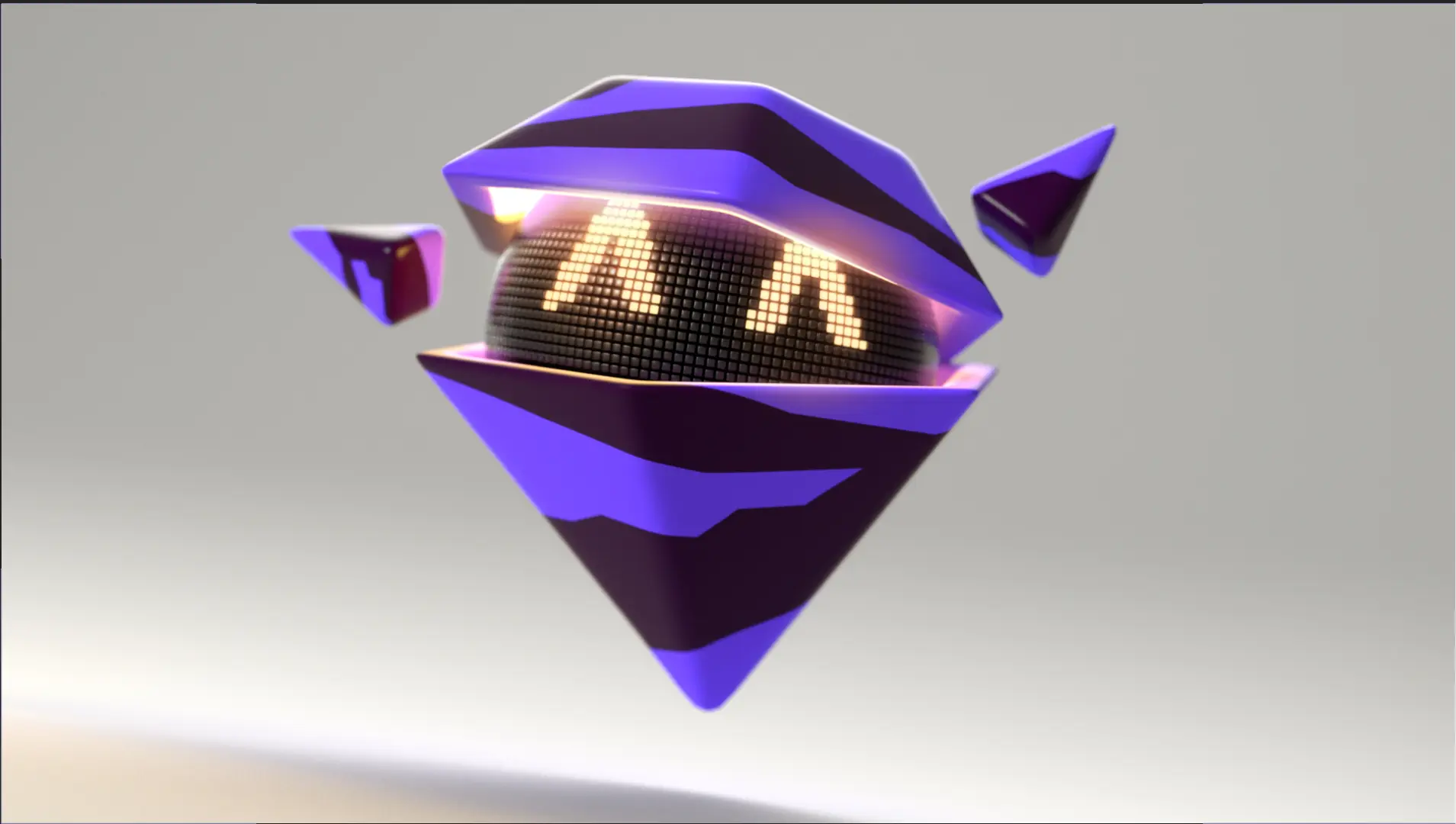
How can motion graphics clearly communicate complex product features?
Motion graphics effectively communicate complex product features through visuals like exploded views, dynamic labels, and cutaways. This clarifies functionality and improves viewer comprehension.
How do we craft a compelling visual narrative for a motion graphics video?
A compelling visual narrative combines clear messaging, engaging visuals, and strategic camera movement. Subtle animations enhance understanding and create a captivating story.
How can we maintain audience engagement throughout an animated explainer?
Maintain audience engagement with dynamic visuals, concise messaging, and a clear narrative arc. Varied pacing and interactive elements prevent viewer drop-off.
How can animated videos effectively convey brand personality?
Animated videos convey brand personality through visual style, tone, color palettes, character design, and music choices, creating a cohesive brand experience.
What are the essential pre-production steps for a motion design project?
Essential pre-production steps include defining objectives, target audience analysis, concept development, scriptwriting, storyboarding, and asset gathering.
How do animated explainers connect emotionally with the target audience?
Animated explainers connect emotionally by using relatable characters, compelling storylines, and evocative sound design to resonate with the target audience.
What audio elements enhance the impact of an animated video?
Music, sound effects, and professional voiceovers enhance impact by adding depth, emotion, and clarity, creating a more immersive experience.
What are the critical strategic considerations before a motion graphics project?
Critical strategic considerations include defining clear objectives, identifying the target audience, establishing a budget (ranging from $1000 to $6000 for a 60-second video depending on complexity), and setting realistic timelines (typically 3-8 weeks).
How do we seamlessly integrate brand assets into an animated video?
Brand assets are seamlessly integrated through consistent visual style, color palettes, logo placement, and messaging, reinforcing brand identity.
How can color and typography create visual hierarchy in motion graphics?
Color and typography create visual hierarchy by guiding the viewer's eye, emphasizing key information, and establishing a clear visual flow.
How do companies use animation for internal communications?
Animation is used for internal communications to simplify complex information, engage employees, and reinforce company culture in training, onboarding, and announcements.
How are animated videos used in a marketing funnel?
Animated videos are used in marketing funnels to explain products, build brand awareness, and drive conversions at different stages, from awareness to decision.
How can we adapt a motion design example for our business?
Adapt motion design examples by tailoring visuals, messaging, and tone to specific business needs and target audience.
What's a storyboard's role in animated video creation?
Storyboards visualize narrative flow, shot composition, and animation sequences, ensuring a cohesive and engaging final video.
How can motion graphics showcase company culture authentically?
Motion graphics showcase company culture authentically through relatable characters and visuals that reflect company values and work environment.
The Art and Science of Animation Principles
Beyond fundamental composition and color lies a deeper layer driving visual impact: the core principles animating static elements into compelling narratives. Mastering this art and science transforms simple movement into communication. It involves understanding *why* something moves the way it does and *how* that movement influences viewer perception and emotional response. This intricate understanding elevates visual storytelling, turning information into an experience.
The effectiveness of any Motion Graphics Video often hinges on applying these nuanced techniques. It is not merely about making things move; it is about imbuing them with intention, weight, and personality. This requires a deliberate approach, leveraging techniques honed over decades of animation history and adapting them for modern digital platforms and purposes like data visualization or creating seamless broadcast graphics. Let us explore some key areas where this art and science truly shines.
These principles and applications form the backbone of truly dynamic visual communication, guiding the viewer's eye, enhancing understanding, and creating memorable experiences.
Core animation principles bring life to motion. Techniques like easing dictate flow, preventing jarring starts or stops. Anticipation builds expectation, while squash and stretch gives elements tangible weight and flexibility. Follow-through and overlapping action add natural secondary movement, contributing realism and appeal.
Staging and composition guide focus dynamically. Effective staging ensures the viewer's eye is always on the most important element as the scene evolves. Dynamic composition uses movement, size changes, and placement to create a visual flow that directs attention and reinforces the message.
Specialized applications demand tailored approaches. Translating complex information into clear, digestible visual narratives through effective data visualization is a distinct skill. Creating broadcast graphics like lower thirds or title sequences requires not only visual flair but also adherence to technical standards and instant recognition.
Modern design considerations include adaptability and user interaction. Designing motion graphics for various screen sizes requires a responsive approach. Integrating motion into UI/UX design, like creating helpful microinteractions, enhances user experience and intuitiveness. Accessibility principles ensure videos are understandable for wider audiences.
By embracing these principles, creators move beyond simple animation, crafting motion graphics that are not just seen, but truly felt and understood.
Why Advids for Motion Graphics Video?
At Advids, we specialize in crafting high-quality, original Motion Graphics Videos that elevate your brand and drive business growth. Our unique blend of creative storytelling, cutting-edge technology, and a proven track record ensures your vision translates into compelling and effective animation.
Transforming Ideas into Engaging Animated Experiences:
Customized Motion Graphics Video Solutions: From explainer videos and product demos to brand stories and character animations, we tailor each project to your specific needs and target audience.
Creative Storytelling Through Animation: Our talented team of animators and storytellers craft captivating narratives that resonate with viewers and inspire action.
Cutting-Edge Motion Graphics Video Technology: We utilize the latest software and techniques to create visually stunning videos that leave a lasting impression.
A Legacy of Success and Client Satisfaction:
12+ Years of Proven Success: With over 3400 clients served, we possess a deep understanding of what makes a Motion Graphics Video truly effective. We've completed over 345 successful Motion Graphics Video projects.
Trusted by Industry Leaders: Brands like Razorpay, Ola, Mercedes, the United Nations, Continental, and Mercer rely on our expertise to bring their stories to life through captivating animation.
Client Satisfaction Guaranteed: Our commitment to excellence is reflected in over 109 five-star Google reviews, showcasing our talent, creativity, and dedication to client satisfaction.
A Collaborative Approach to Achieving Your Goals:
Collaborative Process: We work closely with you throughout the entire process, from initial concept to final delivery, ensuring your vision is realized in every frame.
Strategic Communication: Open and transparent communication is paramount. We prioritize understanding your objectives, target audience, and brand identity to create impactful Motion Graphics Videos that achieve your business goals.
Ready to unlock the potential of Motion Graphics Video for your business with the latest video design trends of 2024? Let Advids be your trusted partner in transforming your ideas into engaging and effective animated experiences.
Checkout some of the projects and work our team at Advids has been producing:
What is a Motion Graphics Video?
A motion graphics video is a form of visual communication that uses animation, typography, and other visual elements to convey information or tell a story. It's a dynamic and engaging way to present data, explain complex concepts, or simply capture attention. Motion graphics videos are used across a wide range of industries, from advertising and education to entertainment and healthcare.
Motion graphics videos are versatile and can be used for a variety of purposes. They can be used to create explainer videos that simplify complex concepts, animated commercials that capture attention, or social media content that engages viewers. They can also be used to create interactive experiences, such as virtual tours or product demonstrations.
What do top Motion Graphics Videos have in common?
Mastering motion graphics video requires a strategic approach; focus on these key elements to create impactful videos.
Brand Identity: Unique visual elements create instant recognition and lasting brand recall. Use consistent logo, colors, and style across all platforms.
- Storyboarding: Pre-visualization ensures a cohesive narrative, minimizing costly revisions. Develop a detailed storyboard before animation begins.
- Visual Hierarchy: Strategic use of size, color, and placement guides viewer focus. Prioritize key information for maximum impact and clarity.
- Animation Style: Style choices (2D, 3D, flat) directly support the message and brand. Select a style that aligns with the brand's personality and target audience.
- Color Palette: Color psychology evokes emotion and reinforces brand messaging. Use colors that resonate with the target audience and brand identity.
- Typography: Font selection ensures readability and reinforces brand personality. Choose fonts that are both legible and visually appealing.
- Motion Graphics: kinetic typography and dynamic elements enhance engagement. Use motion to highlight key information and create visual interest.
- Clear Concept: A single, powerful idea drives the video's message and impact. Focus on one core message to avoid viewer confusion.
- Compelling Narrative: Emotional storytelling creates a connection with the audience. Use relatable characters and scenarios to build empathy.
- Target Audience: audience analysis shapes every creative decision for maximum impact. Tailor the video's style and message to resonate with the specific audience.
What makes Motion Graphics Video effective?
Masterful visual design hinges on the synergistic interplay of visual hierarchy and composition, a thoughtfully chosen color palette establishing brand identity and guiding viewer focus, and typography that reinforces brand voice and ensures effortless readability. Strategic use of white space is not merely about emptiness; its a powerful design tool that enhances readability, improves visual breathing room, and creates a sense of sophistication.
A meticulously crafted narrative arc, with a clear beginning, rising action, climax, falling action, and resolution, is paramount. This structured approach maximizes viewer engagement and memorability. Thorough storyboarding and pre-visualization are crucial. These processes ensure a cohesive narrative and allow for iterative refinement before animation begins, minimizing costly revisions.
Animation style and technique are strategically chosen to align with the videos tone and style, emphasizing key information and creating emotional resonance through subtle yet powerful movements. Precise pacing, achieved through strategic use of timing, transitions, and visual cues, maintains viewer engagement and prevents information overload. Varying the pace keeps the audience attentive.
Understanding the target audience is paramount. The visual style, narrative, and pacing should all be tailored to resonate with the intended viewers. Maintaining brand consistency throughout the video is critical. This includes consistent use of logo, fonts, colors, and overall visual style to reinforce brand recognition and recall. A clear, concise, and strategically placed call to action, when appropriate, leaves a lasting impression and guides viewer behavior. This should be visually distinct and easily accessible. Effective motion graphics prioritize information hierarchy. This ensures that key messages are immediately apparent and understood, guiding the viewers attention strategically.
How long should your Motion Graphics Video be?
Mastering motion graphics video length hinges on aligning video type, intended use, and audience engagement.
Pre-production Considerations for Determining Video Length:
- What's the core message for each video type?
- Who's the ideal viewer for this video?
- How many key features need showcasing?
- What visual style best suits the message?
- Which platform dictates video length?
- Does the video need a clear CTA?
- What's the overall marketing goal?
Motion graphics video length guide
| Motion Graphics Types | Video Length | Use Case | Funnel |
|---|
| Explainer Video | 60-90 seconds | Clearly communicates complex product features or services concisely, using a simple narrative and engaging visuals like 2D animation or whiteboard style. | Awareness |
| Social Media Ads | 15-30 seconds | Captures attention instantly with impactful visuals and a clear call to action, often employing a dynamic style like kinetic typography or short, punchy animations. | Consideration |
| 2D Animation | 30-60 seconds | Explains processes or tells stories creatively, using various styles including flat design or cartoonish aesthetics for a memorable experience. | Awareness/Interest |
| Kinetic Typography | 15-45 seconds | Highlights key messages or quotes with dynamic text animations, ideal for short, impactful statements or social media campaigns. | Consideration/Decision |
| Product Demo | 45-90 seconds | Showcases product features and benefits through a clear demonstration, using screen recordings and close-ups for a detailed view. | Decision |
How to create Motion Graphics videos?
Mastering motion graphics for UI demos requires a strategic approach, focusing on clear communication and impactful visuals to showcase functionality and user experience effectively.,,Creating compelling motion graphics videos for UI demos demands a meticulous process, from concept to completion, to ensure a polished and effective final product.
* Define Purpose & Audience - Target audience analysis ensures the message resonates, maximizing impact and engagement.- Narrative Development - A strong narrative creates a memorable experience, guiding viewers through the UI effectively.
- Storyboard Creation - A detailed storyboard ensures a cohesive and engaging visual journey, highlighting key UI interactions.
- Animation Style Selection - The right style enhances UI clarity and brand consistency, creating a professional and memorable video.
- Color Palette & Typography - Careful selection improves readability and brand recognition, creating a visually appealing and effective UI demo.
- Asset Creation - High-quality assets ensure a polished look, enhancing the perceived value and professionalism of the UI demo.
- Video Composition - Strategic composition guides the viewer's focus, highlighting key UI features and interactions for maximum impact.
- voiceover Recording - A clear and concise voiceover enhances understanding and engagement, making the UI demo more accessible.
- Video Editing & Transitions - Smooth transitions create a professional and engaging viewing experience, improving comprehension.
- VFX & Enhancements - Subtle effects draw attention to key UI elements, improving user understanding and engagement.
Motion Graphics for Different Marketing Channels
Having explored the fundamentals of motion graphics, let's now turn our attention to how we can effectively deploy them across various marketing channels. Each platform presents unique opportunities, and tailoring our approach is key to maximizing impact. From grabbing attention on social media to enhancing user experience on our website, motion graphics can play a transformative role.
Marketing animation offers a powerful toolkit for engaging audiences across the marketing funnel. Think about how a short, punchy animation can capture attention on Instagram, while a longer-form explainer video might be perfect for a YouTube deep dive. Or consider how motion graphics can elevate a product demo, making complex features instantly understandable. Even within email marketing, a touch of animation can significantly boost click-through rates.
- Social Media: Motion graphics video examples for social media demonstrate the power of short, engaging content. A quick product reveal on Instagram or a quirky animation on TikTok can capture attention and drive engagement.
- Website Integration: Imagine a landing page where key features come alive through subtle animations, or a product demo that seamlessly guides users through the interface. Motion graphics can transform user experience, making it more intuitive and engaging.
- Email Marketing: A touch of animation in an email campaign can be the difference between a click and a delete. Motion graphics can draw attention to key information and encourage further interaction.
- Display Advertising: In the crowded world of online advertising, motion graphics can make your banner ads stand out. A dynamic visual can capture attention and drive traffic to your website.
Motion graphics empower us to connect with our audience in a dynamic and memorable way, regardless of the channel. By understanding the nuances of each platform and tailoring our approach, we can unlock the full potential of motion graphics and achieve our marketing goals.
The Power of Storytelling in Motion Graphics Videos
We've covered the technical nuts and bolts, but let's face it: motion graphics truly shine when powered by a compelling story. Think about your favorite animated explainer videos – they likely resonated because of a strong narrative, not just flashy visuals. Storytelling transforms ordinary videos into captivating experiences, forging connections with viewers and leaving a lasting impact. It's the secret sauce that elevates our work from good to unforgettable.
Let's explore how we can harness the power of narrative:
- Emotional resonance is key. Stories tap into our feelings, making information relatable and memorable. Imagine a motion graphics video examples for explainer videos that explains a complex product feature by weaving it into a heartwarming story about a user overcoming a challenge. That emotional connection makes the message stick.
- Stories simplify complexity. A clear narrative provides a framework for understanding, making even the most intricate ideas digestible. Motion graphics video examples 2D animation often excel at this, using simple visuals and engaging characters to explain complex processes.
- Narratives drive action. A well-crafted story with a compelling call to action motivates viewers to take the next step, whether it's visiting a website or making a purchase.
- Stories build brand identity. A unique brand story sets us apart and creates lasting recognition. Think of iconic animated explainer videos that have become synonymous with their brands.
Visual storytelling examples abound, demonstrating how a simple character animation or a clever metaphor can convey a powerful message. By mastering the art of narrative, we transform our motion graphics into truly engaging and impactful experiences.
How to Effectively Communicate Your Vision to a Motion Graphics Team
Having covered the technicalities, let's talk about bringing your motion graphics vision to life. Effectively communicating with your motion graphics team is crucial for a successful outcome. It's about translating your ideas into a tangible video that meets your goals.
Think of it like building a house – you wouldn't just hand the blueprints to a contractor and walk away. You'd discuss your vision, preferences, and expectations throughout the process. Similarly, collaborating closely with your motion graphics team ensures your video aligns perfectly with your vision.
- Define your goals. What do you want to achieve with this video? Is it to explain a complex product, boost brand awareness, or drive conversions? Clarity here sets the foundation for the entire project.
- Showcase inspiration. Sharing top motion graphics video examples or even animated video samples helps the team grasp your aesthetic preferences. For instance, if you're in financial services, sharing motion graphics video examples for financial services can be particularly helpful.
- Provide clear brand guidelines. This includes your logo, color palette, typography, and overall brand personality. Consistency is key for a professional and impactful video.
- Maintain open communication. Regular check-ins, constructive feedback, and a collaborative spirit ensure everyone stays on the same page throughout the project.
By following these tips, we can ensure a smooth and successful collaboration, resulting in a motion graphics video that effectively communicates your vision and achieves your objectives.
Reviewing and Approving Motion Graphics Work
Now that we've covered creating motion graphics, let's talk about the crucial review and approval stage. This step ensures the final video aligns perfectly with our vision and goals. Think of it as the quality control check before sharing your masterpiece with the world. We've all been there – a seemingly minor detail overlooked can throw off the entire project. A systematic approach prevents these hiccups and guarantees a polished final product.
Reviewing isn't just about checking boxes; it's about ensuring the video effectively communicates our message and resonates with our audience. For instance, corporate animation often requires a different approach than motion graphics video examples for e-learning. While the former might prioritize a professional and informative tone, the latter needs to be engaging and educational. Similarly, best motion graphics video examples can inspire us, but blindly copying them won't necessarily achieve our unique objectives.
• Focus on the Big Picture: Does the video achieve its intended purpose? Does it resonate with the target audience? Sometimes, we get so caught up in the technical details that we lose sight of the overall impact.
• Provide Constructive Feedback: Instead of simply saying "I don't like it," explain why. Offer specific suggestions for improvement. For example, "The transition at 0:15 feels abrupt. Could we try a smoother fade?"
• Collaborate, Don't Dictate: Remember, we're working with talented professionals. Treat the review process as a collaborative effort, not a dictatorship. Open communication and mutual respect lead to the best results.
• Test Across Platforms: Before giving the final stamp of approval, ensure the video plays seamlessly across different devices and browsers. A stunning video on your desktop might be a pixelated mess on a mobile phone.
By following these tips, we can ensure a smooth and successful review process, resulting in a motion graphics video that effectively communicates our message and achieves our goals. Remember, a well-executed review is the final polish that transforms a good video into a great one.
Motion Graphics for Internal Communications
Beyond external marketing, let's explore motion graphics' power within our organizations. internal communications often suffer from information overload and disengagement. Motion graphics offer a dynamic solution, transforming mundane updates into captivating experiences. Imagine onboarding new hires with videos showcasing company culture, not just bullet points. Think of training modules where complex procedures come alive through 3D animation, making learning interactive and fun. That's the power we unlock with motion graphics.
We can foster a more informed and connected workforce by leveraging animation. Visualizing data with motion graphics transforms team communication, making complex strategies instantly understandable. Think of product animation videos, not just for customers, but for showcasing internal tools and systems. Sharing animated video case studies of successful internal projects can inspire and motivate teams.
- Onboarding: Welcome new hires with engaging videos showcasing company culture and key information, adapting motion graphics video examples for marketing to create a lasting first impression.
- Training: Transform complex procedures into digestible, interactive modules using motion graphics. Motion graphics video examples 3D animation can bring abstract concepts to life, making learning more intuitive.
- Internal Campaigns: Promote initiatives like wellness programs with creative animations, capturing attention and driving engagement.
- Knowledge Sharing: Encourage knowledge sharing within teams through animated presentations and microlearning modules, fostering a culture of continuous learning.
Motion graphics empower us to create a more informed, engaged, and connected workforce. By embracing animation, we transform internal communications into captivating experiences, fostering a culture of transparency and collaboration.
Author & Editor Bio
A video producer with a passion for creating compelling video narratives, Jai Ghosh brings a wealth of experience to his role. His background in Digital Journalism and over 11 years of freelance media consulting inform his approach to video production. For the past 7 years, he has been a vital part of the Advids team, honing his expertise in video content planning, creation, and strategy.
His collaborative approach ensures that he works closely with clients, from startups to enterprises, to understand their communication goals and deliver impactful video solutions. He thrives on transforming ideas into engaging videos, whether it's a product demo, an educational explainer, or a brand story.
An avid reader of modern marketing literature, he keeps his knowledge current. Among his favorite reads from 2024 are "Balls Out Marketing" by Peter Roesler, "Give to Grow" by Mo Bunnell and "For the Culture" by Marcus Collins. His results-driven approach ensures that video content resonates with audiences and helps businesses flourish.





